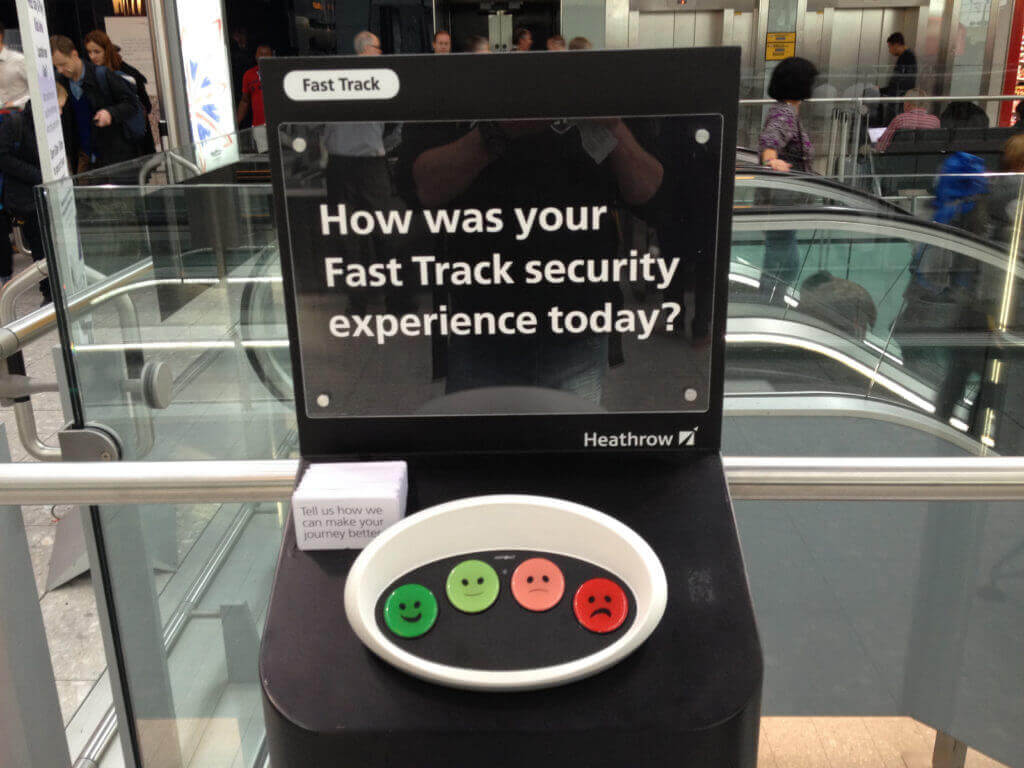Why Metrics Matter
Have you ever had a great experience going through security at an airport? Oddly enough, I can now say I have – and stranger still: I believe I owe it all to retail technology.
Last week I did some international travel. As to be expected, my flight plans were waylaid by weather, and I missed a connecting flight. Also to be expected, the customer experience I had in New York’s JFK Airport was about as bad as it gets. The one (that’s right, one) woman tasked with rebooking an entire incoming flight of Boston-based travelers with missed connections was overwhelmed. I don’t envy her job for a moment; she was dealing with anxious people. But let’s be clear: she wasn’t going to win any awards for caring about her performance. It took a lot of calm and empathetic conversation on my part to get her past her original “You’ll have to wait 23.5 hours to catch the same flight to Brussels tomorrow. ” Some baggage shuffling, a $50 cab ride to LaGuardia, and three hours later I was on my way to London’s Heathrow – never part of my original itinerary, but I wasn’t about to miss a full day of my trip.
And that’s where the strangest thing happened.
The security line in Heathrow was a breeze. The people checking passports, scanning luggage on the conveyor belt – everyone was friendly. As in bizarrely friendly. I thought maybe I’d entered The Twilight Zone. And that’s when I noticed this:

That’s the Happy or Not customer satisfaction tool. I recognized it immediately from last year’s NRF Show. Four simple buttons, ranging from happy face to misery face, which people simply tap to indicate their level of satisfaction with the experience they’ve just had on their way past. I’ve seen it a few times in retail stores on the way out the door, but I had no idea it would find its way into airport security lines.And that’s when I noticed something else: the people working that security line were most definitely paying attention to it.
On my way home, I stopped in Heathrow once more. This time it was part of the plan, and I was super observant from the moment I walked in to see if my first experience had been an anomaly. It hadn’t. Even though my bag was pulled aside for extra scanning, the gentlemen who performed the search couldn’t have been more pleasant about it. I’d go so far as to say he was funny. As I exited and clicked the happy face on the survey tool, I turned around to see if he noticed. He did.
I could have subtitled this blog post “A Tale of Two Cities “: something we use quite frequently here in our Retail Paradox Weekly posts to denote two wildly varying experiences. And in this case (New York vs. London) it would have seemed even more appropriate. But here’s the thing: it’s not. This isn’t a case where the attitudes and helpfulness of New York airport workers can be compared to those of London’s. Left unmonitored, I’d imagine they would have been nearly identical. But because Heathrow’s workforce is monitored, and in such an immediate and noticeable way – with simple metrics to gauge their performance – this traveler had a much better experience in one place than he did in another. And as retailers currently struggle with all of the ways they need to improve the quality and helpfulness of their in-store workforce, I can’t help but think there’s a lesson in here that transcends geography – and industry.
Actionable metrics make everything better. For everyone.
